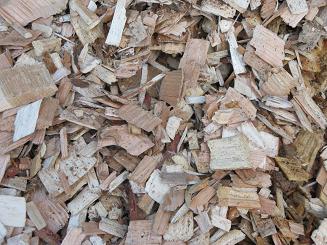When wood is burned, the combustion reaction produces heat and emissions in the form of water, organic vapors, gases, and particulates. The emissions of most concern are carbon monoxide (CO), carbon dioxide (CO2), sulfur oxides (SOx), and nitrogen oxides (NOx). Other regulated elements and compounds, such as mercury and hydrochloric acid are measurable in the emissions but at levels much below accepted maximums. The composition and quantity of the emissions is dependent on the combustion temperature. Higher temperatures encourage complete combustion and result in cleaner emissions (up to 1300 celsius). At lower temperatures the emissions can also include volatile organic compounds, relatively high levels of CO (a product of incomplete combustion), and more particulate concerns.
The NOx (if kept below 1300 celsius) and SOx emissions from burning wood are much lower than those of the fossil fuels coal and petroleum products, and comparable to those of natural gas. Particulate levels in wood emissions are similar to those from burning coal and petroleum and substantially higher than the levels in the emissions from natural gas. Particulate emissions can be controlled to acceptable levels with smoke stack equipment such as scrubbers, bag filters, and electrostatic precipitators. This equipment is however only cost effective on large commercial-sized combustion systems. Particulate emissions from smaller equipment, especially residential-sized units can be a concern. More and more communities and air control districts are placing restrictions on respirable-sized particles (PM2.5 or particulate matter smaller than 2.5 microns). Uncontrolled emissions from wood combustion are high in PM2.5.
The CO2 in wood combustion emissions is considered “carbon-neutral” because the amount of CO2 emitted during combustion is basically equivalent to the amount of CO2 trees need to grow the same quantity of wood. Hence the combustion of wood does not contribute to the net increase in atmospheric levels of CO2 (a greenhouse gas) as does the combustion of fossil fuels.
